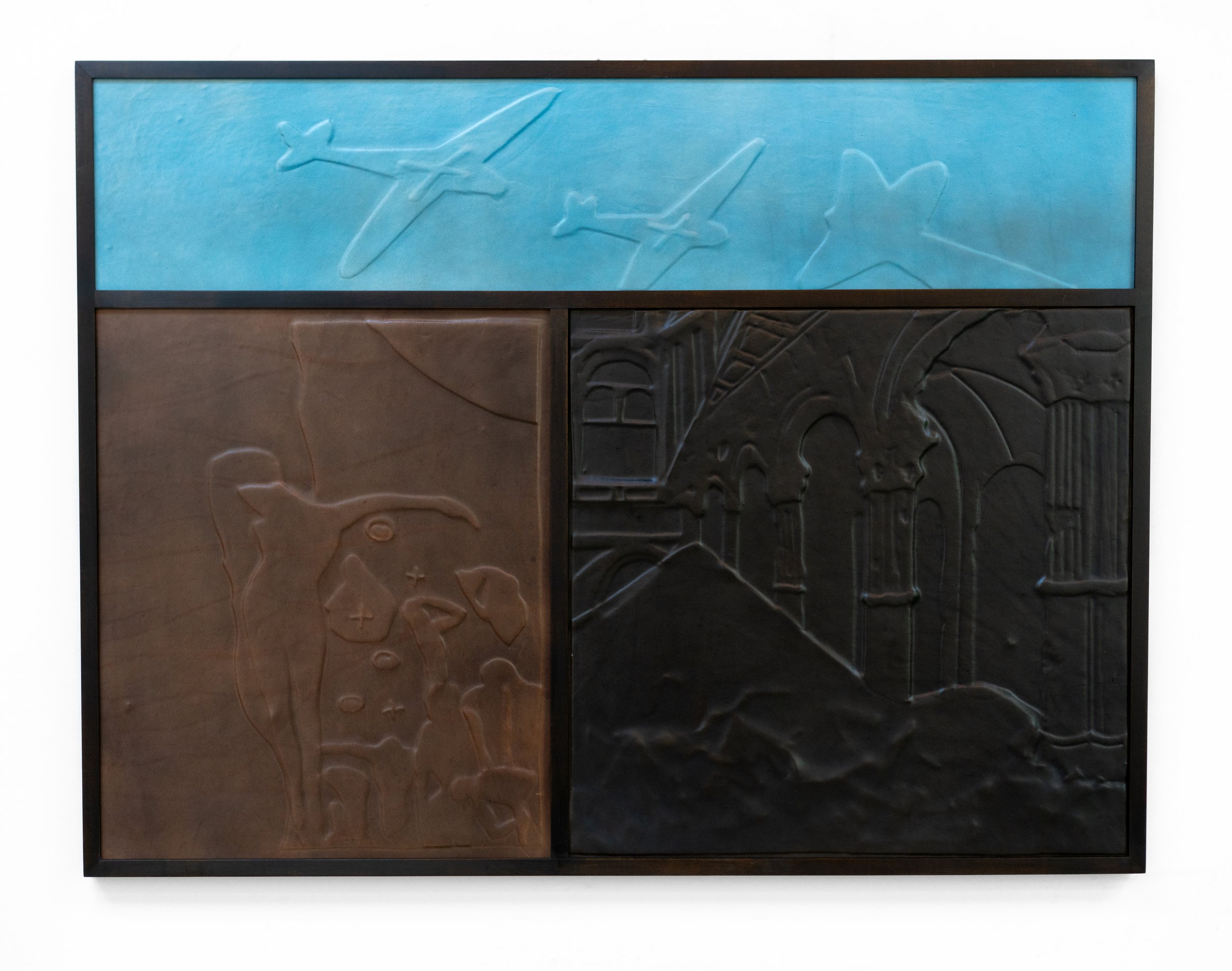BrandWundE
In 1901, Gustav Klimt painted a series of paintings for the University of Vienna. One named Medicine became a controversial work as it depicted a representation of life and death in a raw and intense manner unwanted by the Viennese Medical department. Piles of nude bodies filled the canvas, showing bodies of all forms and stages. Siezed by the Nazis from a Jewish family at the start of World War II, the painting was eventually destroyed by retretreating German soldiers in 1945. All that exists is a singular photograph of the painting.
In Brandwunde, Knight references the mythic painting in a leather triptych. Reimagining its composition, a central body floating in the original painting uses its outstretched arm to shelter the mass of bodies below it. By giving the work consciousness of the suffering it will endure in the war, Knight simultaneously suggests Klimt’s work acting as a foreshadowing of the holocaust and attempted destruction of Klimt’s life work by the Nazi party. In the adjacent leather panel, lies a depiction of the bombed Vienna State Opera, destroyed by the Allied bombings at the end of the war. Again, symbolizing the suffering of art and humanity in the hands of war, the music hall also represents another destroyed Klimt work, Schubert at the Piano, set ablaze next to Medicine in Schloss Immendorf. Above, in a light blue panel, three planes fly over in a manner ambiguous of attack or rescue. Planes, a recurring form in Knight's work, represent a battle of good and evil. Leather, used frequently in Knight’s work, uses its intensity as a material to convey the trauma and power of its subject matter through image transference and familiarity.
Leather, Wax, and Dye, on Maple Panel
47” x 33” 2025

